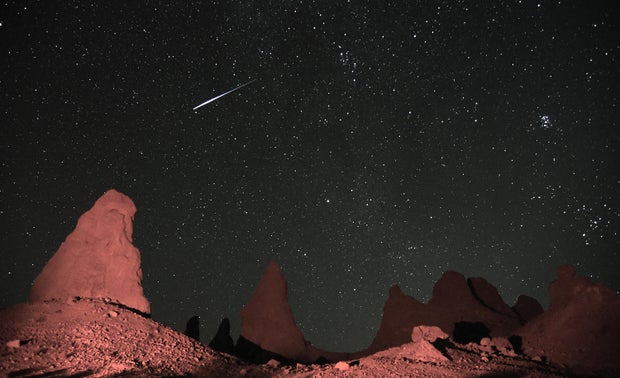The Perseid meteor shower will reach its peak on Sunday evening, providing astronomy fans with one of the best spectacles of 2024 when looking up at the sky.
The shower began in July and will last through most of August, but will reach its peak on Sunday night, NASA said. The Perseids are considered by NASA to be the “best meteor shower of the year” because under ideal conditions, about 50 to 100 meteors can be seen per hour.
What time will the Perseid meteor shower peak tonight?
The best time to observe the Perseids is in the hours before dawn, according to NASA, but it is possible to see meteors from this shower as early as 10 p.m.
NASA points out that the moon will set right when the Perseids reach their peak. The Old Farmer’s Almanac gives exact moonset times for various zip codes in the United States.
Where will the Perseid meteor shower be visible?
The best view of the Perseid meteor shower is from the Northern Hemisphere. NASA advises astronomy fans who want to observe the shower to escape the bright lights of cities.
Bob Riha Jr. / Getty Images
““Try to get to the darkest place you can find,” NASA wrote. “The darker it is where you are, the more meteors you will see streaking across the sky.”
In darker places, about 50 to 75 meteors can be observed per hour.
Which direction should you look for the meteor shower?
Look up! NASA recommends lying on your back so your eyes can adjust to the darkness and turning off your phone. You don’t need to look in a specific direction, as the meteors will generally be seen anywhere in the sky.
The space agency’s Jet Propulsion Laboratory said it might be helpful to lie down facing northeast, but observers should try to capture as much of the sky as possible, as meteors could appear anywhere.
When will the next meteor shower occur?
There are actually two other meteor showers active right now. The southern Delta Aquariids meteor shower began last month and will last until August 21st, peaking in late July. The Alpha Capricornids, a smaller meteor shower, also began last month. It will last until August 11th, according to the American Meteor Society.
The next major meteor shower, the Orionids, will not be active until late September, according to the American Meteor Society, and will reach its peak in October. NASA describes the Orionids as one of the most beautiful showers of the year. The Orionids are known for their brightness and speed.
What are meteor showers?
Meteors – chunks of rock from space that enter the Earth’s atmosphere – shoot through the sky every night, but meteor showers are less common. In a meteor shower, many meteors hit the Earth’s atmosphere in a short period of time. As they pass through the atmosphere, they leave behind streaks of light caused by glowing, hot air.
Bob Riha Jr. / Getty Images
Most meteors burn up as they fall, but some survive the journey and reach Earth. These surviving space rocks are called meteorites.
Look up – what else can you see in the sky this summer?
There are two more full moons this summer. The August full moon, also called the Sturgeon Moon, reaches its brightest on Monday, August 19th. The September full moon reaches its brightest on Tuesday, September 17th, just days before the start of fall.



